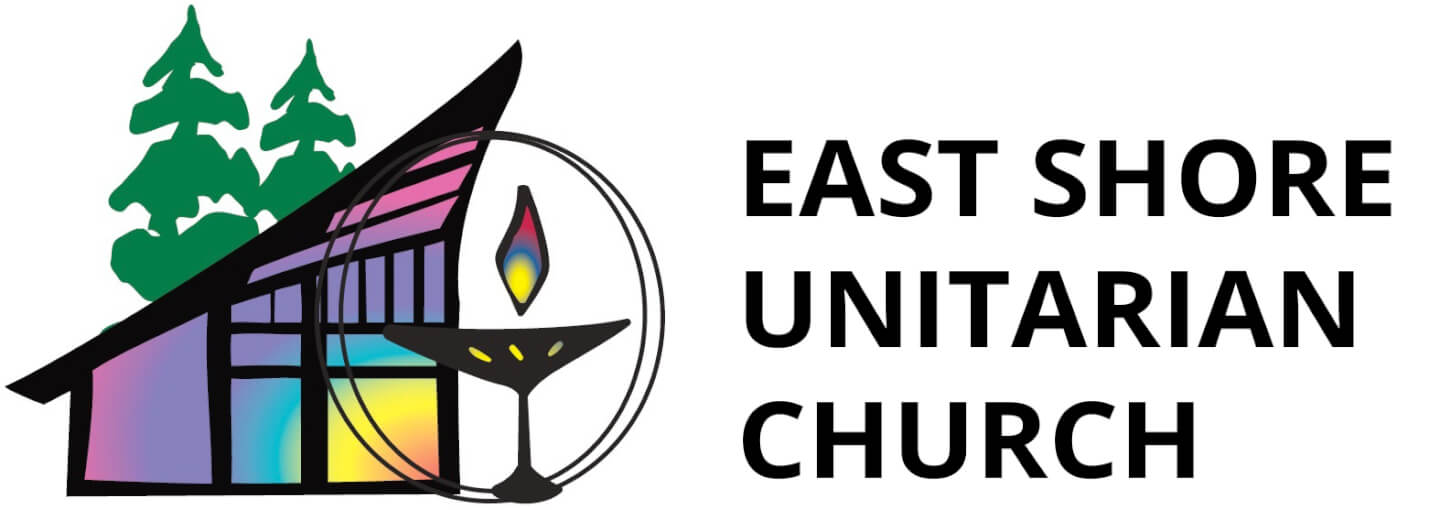
- This event has passed.
What is Leadership?
Sunday, March 14 @ 10:30 am - 11:30 am


As ESUC begins its nearly two years of search for your next Minister, It will be good to consider styles of leadership and what style you think will fit most comfortably and serve most ably among you. Notes on George Patton, Abraham Lincoln, Rev Violet Kochendoerfer, and servant leadership as conceived by Robert Greenleaf and others. Reverend Furrer will be preaching.
how to attend
• To virtually attend, please Zoom in using room number 989 3107 9078.
• To phone into the service, call 669-900-6833, Meeting ID: 989 3107 9078.
For those joining, please mute as soon as you enter the room, so everyone can hear. Please note, the services will be recorded, but at this time, there are no plans to share the recording.
More Information
Religious Education for children and youth begins at 9:30 a.m. in the same room! Learn more here.
If you don’t have a chalice, but want to light one, check out our Making a Chalice at Home page.
Service is followed by Coffee Hour.
Sermon Audio
What is Leadership?
Sermon Text
I want to preach this morning about leadership. I will review different leadership styles, with the overall view that various situations call upon leaders to choose which style is best. I want to reflect specifically about which style is best in the congregational context, how that’s changed over the years, and some of the serious challenges facing your congregation in the months ahead. And finally, I want to encourage all of you who are members to begin thinking about what kind of leader you are looking for in your next minister.
+ + + + +
When contemplating leadership, most people begin with an image of a Field General. George Patton, for instance: authoritarian, daring, and charismatic, Patton could be tough on his soldiers, but mostly they loved him. Capt. John Miller, the fictional hero of Stephen Spielberg’s award-wining movie “Saving Private Ryan,” is such a leader. Taciturn, decisive, and unflinching, the men under his command were devoted to him. The military historian Victor Davis Hanson considers leaders of this style a principal reason our country prevailed in the Second World War.
However, the U.S. Army Handbook lists three kinds of leadership styles, one of which (the style I have been describing) they connote as “authoritarian or autocratic.” Also listed:
- The “participative or democratic” leadership style (in which input from subordinates is sought and used) and (a third style):
- “delegative or free reign,” leadership (wherein the leader delegates to subalterns’ various tasks with instructions to figure out what needs doing and see that it gets done.
The Army Handbook points out that different situations call for distinctive styles; the best leaders can practice all three. Abraham Lincoln is a good example. I recently read Doris Kearns Goodwin’s best-seller, Team of Rivals, about Lincoln’s Civil War Cabinet. As a true war President, Lincoln recognized his constitutional duty to make executive decisions. He worked closely with the Congress, studied military strategy, and met with his officers in the field. His reputation as a hayseed preceded him; however, the times were so perilous that he persuaded key rivals to join his cabinet. Representing competing factions (and all of them certain of their greater capacity), it was some time before each of them, in turn, came to appreciate the President’s brilliance and acumen. Issuing the Emancipation Proclamation is a case in point. In late 1862 Lincoln told his cabinet that fighting the war the way they were was not working; new initiatives to weaken the rebellion must be considered, including abolition (authoritarian). He then asked for their ideas and input on the details and timing (participative). Once those were compiled, sorted through, and synthesized, Lincoln issued the hallmark decree; its implementation was entrusted to others (delegative).
Congregational leadership, while different from political leadership, requires some of the same skills—particularly the ability to vary one’s style to fit the situation. In recent decades, the influence of women in the ministry has reordered many ministerial norms within Unitarian Universalism. The old mid-20th century model, all but exclusively male, is well described by John Updike in one of his last stories published in the New Yorker.1 Updike’s father-in-law was Leslie T. Pennington (1899-1974), the longtime Unitarian Minister in St. Louis who retired to a farm in Vermont. The New Yorker story was clearly autobiographical. “His parish,” writes Updike, “included university existentialists, and some hip philosophy buffed up his old-fashioned transcendentalist sermons, which he delivered in a beautiful voice, tentatively.”
For most of these people, the ministry was a “preaching station.” Ministers were scholars in residence—and little in the way of pastoral care, aside from the occasional funeral, was expected. (Peter Raible, at University Unitarian and Phillip Hewett, at the Vancouver, B.C. church from the mid-’50s into the ‘90s, both exemplified the archetype.) By the early ‘60s, the model had morphed; instead of scholars, Unitarian Universalist ministers were more often activists-in-residence who traveled the world, met interesting people, and invited congregants to share their experiences vicariously. (My youthful minister in Cleveland, Reverend Bob Killam, visiting with physicians Albert Schweitzer in Gabon and Tom Dooley SE Asia was typical.) As the ‘60s progressed, some UU ministers—and over the decades more and more—engaged in civil disobedience.
Despite the fact the Universalists were the first denomination to ordain women (1864) and had, by the late 19th century many women ministers, the tide turned following the First World War. It was not until the late 1950s that Starr King admitted their first female seminarian: Violet Kochendoerfer, a member of the Santa Fe Unitarian Fellowship I later served. She went on to serve several congregations, setting off a trend that has grown ever since. By the time I arrived in Berkeley in 1974—fifteen years after Violet Kochendoefer led the way–close to a third of those preparing for liberal ministry were women. By the time I left in ‘83, more than half. Today women account for over two-thirds of ministers in the field, and I have ministerial colleagues who are trans and others who identify as non-binary. The overall effect of all this has been the adoption of a more collaborative, relationship-oriented model of parish ministry. We are asked, and expected to be more facilitator than director, more pastoral than political.
We are still expected to be able to preach, and to do original work, but are asked to be personally engaged with our members and in the surrounding community. Moreover, women ministers have helped to change the tone in Unitarian Universalism; no longer are most of our churches debating societies. There is a more interactive, encouraging atmosphere and less intellectual arrogance. (Or so it seems to me.) Liturgically, our worship services have more poetry and texture, as exemplified by the inclusion of Chalice Lighting, Joys and Sorrows, and special annual services like water and flower communions.
The aloof, authoritarian model described by John Updike has virtually disappeared. With a deemphasis on intellectual superiority (or pretentions to that effect) has come a corresponding emphasis on strengthening relationships and greater collaboration. The servant model has replaced the Field General model of leadership.
+ + + + +
Robert Greenleaf worked for AT&T for forty years researching management, development, and education. Suspecting that the power-centered authoritarian leadership model so prominent in our country’s institutions was not working, Greenleaf took and early retirement to establish the Center for Applied Ethics. Throughout the ‘70s and ‘80s, he developed the idea of Servant Leadership. Robert Greenleaf held that servant leaders care first about serving the needs of their followers and only secondarily about leading. “The best test, the most difficult to administer,” he wrote [Essentials of Servant Leadership], “is this: Do those served grow as persons? Do they, while being served, become healthier, wiser, freer, more autonomous, more likely themselves to become servants?”
Implementing the servant leadership model in American institutions has met resistance, not only from authoritarian type leaders, but also from many followers who desire a paradigm they are familiar with coercive power over rather than relational power based on mutual agreements. Moreover, business institutions legally serve their stockholders’ commercial interests, period. “Growing as persons” seems almost laughable in such a calculus. Churches, on the other hand, are special institutions with a more wholesome mission. In church, ideas of becoming “healthier, wiser, freer, and more autonomous” are—and always have been—valued. And this is especially so in our Unitarian Universalist Churches.
Robert Greenleaf’s ideas about servant leadership gelled after he read Journey to the East by Hermann Hesse. In my 20s I read virtually everything Hermann Hesse had written and loved all of it. Journey to the East is short and accessible. In it the narrator tells the story of being on a mythical journey with a bunch of other people. He is especially impressed with Leo, who accompanies the party as one of the servants doing menial chores, but who also sustains them with his spirit and song. All goes well until Leo disappears. Before long, the party disbands. After years of wandering, the narrator meets Leo again, only to discover that the simple fellow he had first known is actually the leader and guiding spirit of the Order that had sponsored the journey.
Another of my favorite books, The Snow Leopard by Peter Matthiessen, has a similar theme. Matthiessen was invited to accompany wildlife biologist George Schaller on a trip deep into the Himalayas. Schaller’s aim is to study the rutting behavior of Himalayan blue sheep, and maybe to see a rare snow leopard. Matthiessen’s journey is more of a pilgrimage. He visits with hermit saints and bodhisattvas, but in the end comes to recognize the Buddha in their Sherpa guides: servants, who the socialite Matthiessen hardly mentions—because he hardly notices them—in the book’s early chapters.
As your Developmental Minister, let me make one thing clear: I am committed to the idea of servant leadership. Like everything else, it must be balanced by other models from time to time, as circumstances dictate. However, as an overall paradigm, I support it and try to follow its vision of collaborative endeavor for the benefit of those I am honored to serve.
One of my models for this kind of leadership has been the Reverend Jacqui Lewis of the multiracial, multicultural Middle Collegiate Church in Greenwich Village, New York. I have attended services there and attended a three-day workshop she led sponsored by the UU Ministers’ Association at the Asilomar Conference Center in Monterey. As a student of human development, Jacqui Lewis prefers to think of leadership in narrative terms. “We are the product of the stories told to us, about us, for us—stories like ethnicity, or national origin, or gender, or sexual orientation or religion,” says Reverend Lewis. Our congregations are the same: developed by virtue of the narratives we include and incorporate. Recruit people and their stories into your heart and think of them as yourself. “Build a relationship,” says Jacqui, “with someone who opens your heart and grows your empathy, that puts their story inside your story.” As we do this collectively and cooperatively, the church becomes a truly beloved transformational community.
+ + + + +
“I know one thing,” wrote the Noble Peace Prize winner (and Unitarian) Albert Schweitzer shortly before his death in 1965. “Those of you who have not learned how to serve will not find happiness.” In his award-winning book, The Company of Strangers, the Quaker Parker Palmer praises the transformational power that covenantal faith traditions such as our own can provide when linked to the idea of service— “and service is its prayer.” “To be in covenant… is not to receive power and privilege and the right to domineer over others.” writes Palmer. “Instead, covenant means acceptance of weighty obligations to… ‘do justice, love mercy, and walk humbly with thy God….’ It is [the]image of servanthood,” he concludes, “which keeps authentic faith from seeking political dominance.”
Leadership theory, of course, is one thing. Actual leadership is something else, especially since we all know that leading Unitarians is like herding cats. Priding ourselves on autonomy and freedom of conscience as most UUs do, it takes an unusual amount of encouragement, cheerleading, and individual cajoling to get enough people on board so that consensus is willingly embraced and the making of collective decisions becomes possible. In such situations the servant leader focuses on getting everyone to understand that the mission of the church is service—to the children and youth, to the wider community, and to one another.
East Shore Unitarian Church: we have all been in a funk because of COVID. The whole country has! But soon things will start to open and start to percolate again—and we must be ready to meet the clarion call:
Our church’s mission is service to the children and youth,
to our spiritual siblings in the wider community,
and to one another.
May it be so. May it be enthusiastically and joyously so!
Amen. Blessed be. Shalom. Salaam. Namaste.


